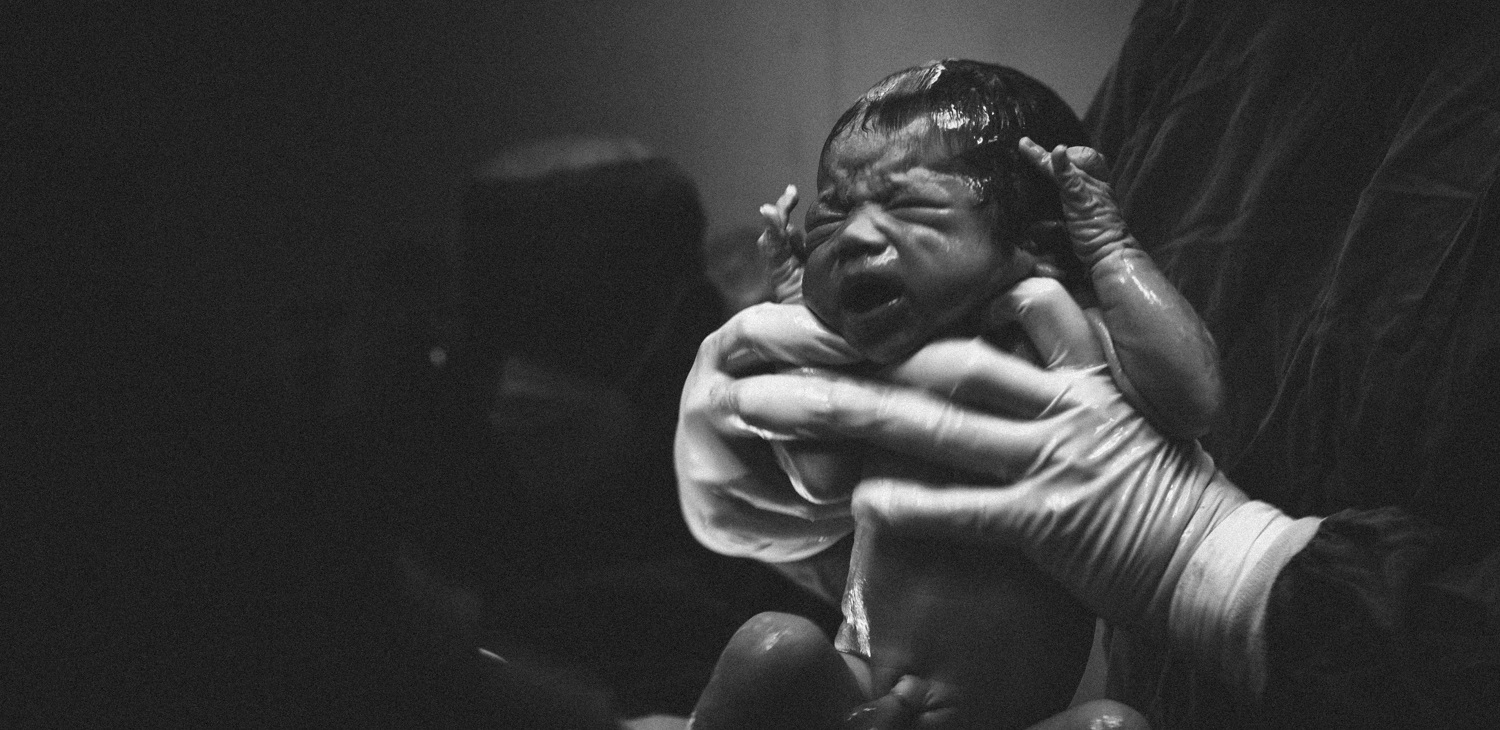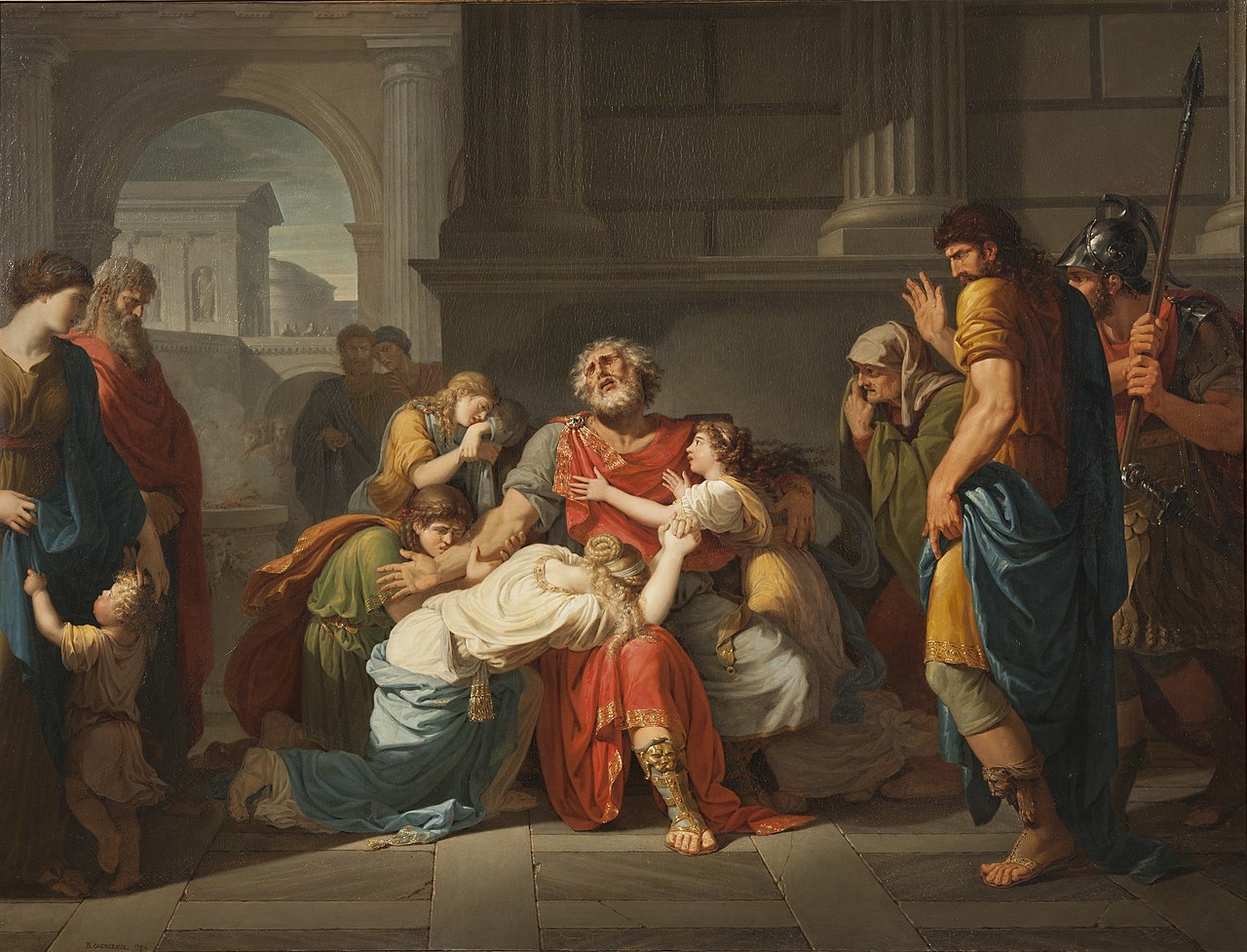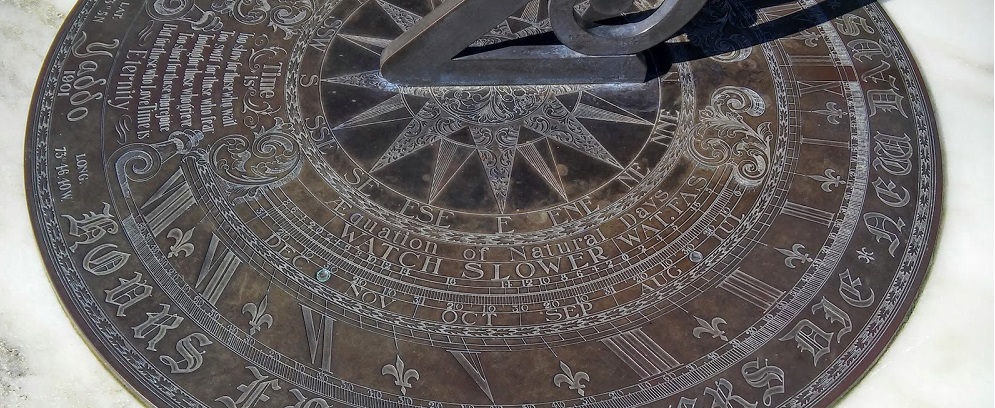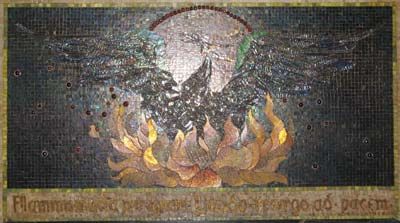Table of Contents
the breath of life

The contemporary choral composer Dan Forrest had no way of knowing when he was contacted by the professional choir Bel Canto for a commission that he would write something audiences would associate with the COVID pandemic and the death of George Floyd. Since the premier took place in October 2019, though, the association was inevitable. The piece poignantly represents the truth that “There’s beauty and joy and wonder in every breath we take.”
As for the commission itself, it was left “wide open,” Forrest says, with the understanding that the commissioning choir is a professional-level group. He was free to make the music challenging in a way he might not feel free to do if he’d been aiming more at church or community choirs. Bel Canto’s website has this to say about the genesis of the piece:
the breath of life was commissioned in 2017 in memory of Suzanne Goddard after her unexpected death in December of 2015. Suzanne had long been one of Bel Canto’s biggest fans, and served on the board for six years, including two years as president. One of the last Bel Canto concerts she attended featured Dan Forrest’s Requiem for the Living. After the performance, she enthused about the piece every chance she got to anyone who would listen.The board determined that if music were to be commissioned in her honor, there was no composer who would please her more or better capture the passion with which she lived her life than Dan Forrest. Inspired by Suzanne’s writings and poems, prayers and books that were important to her, the piece was originally conceived for chorus and small chamber ensemble in three movements. As Mr. Forrest began work, the music has taken on a life of its own and grown to four movements accompanied by chamber orchestra that includes strings, piano and percussion.
I took the liberty of quoting this fairly long section because of the insight it provides into how the work evolved. Further information about the creative process comes from an interview video posted at the end of this article. In it, we find out that Forrest keeps journals about his composing processes, and these reminded him that he had wanted to do something completely different from his previous big piece Jubilate Deo, which was kind of, as he says, “over the top” and perhaps on the verge of being “over scored.” He says there are almost “too many notes on the page,” which of course brings to mind the famous scene in the movie Amadeus in which the Emperor Franz Joseph tells Mozart the same thing. Forrest had been interested in minimalism for some years and decided to make the texture of this piece “thinner.” “Can I write something where only a few notes deeply matter?” he asked in his composition journal. I don’t do musical analysis as a rule in my material, but I will suggest that the sound is gorgeous and rich to my untrained ears and not “thin” in any way.
The work, Forrest says, started out as a meditation on the passage of time, but that idea just wasn’t going anywhere. Then he ran across the poem that forms the text for section 2, and the whole direction of the piece changed. Now his first section describes the actual source of life: the breath of God.
et Deus inspiravit… (and God breathed…) (from Genesis 2:7, Vulgate)

Et Deus inspiravit in faciem eius spiraculum vitae;
et factus est homo in animam viventem.
(And God breathed into his face [or nostrils] breath [of] life;
and made is man into a living soul. trans. Debi Simons)
There are two creation narratives about humankind in the book of Genesis. In chapter one we’re told simply that God created humans “in his own image,” and that “male and female created he them.” Chapter 2 then expands on this story: God first forms Adam from “the dust of the ground,” as many translations render the Hebrew. Here’s an interesting etymological note from the BibleGateway site: “The Hebrew for man (adam) sounds like and may be related to the Hebrew for ground (adamah); it is also the name Adam.” You may picture a life-size clay sculpture of a male figure that suddenly comes alive when God “breathes into him.” This action is seen by many religious traditions as the “ensoulment” of Adam. There have been many theological debates about the exact meaning of what is happening, but we don’t need to get into those weeds here. Instead, we can simply note that Adam starts breathing. How do we know that a human or an animal is alive? By whether or not there is breath. (Everyone knows about the on-the-ground test for breath you can undertake if you’re not sure of life, which is to hold a mirror up to the person’s mouth/nose and see if there’s condensation on it from the moisture in breath.)
In the “isn’t Latin a cool language?” department, note the syllable “spir.” It occurs in a surprising number of English words, including:
spiracle: blowhole through which a whale “breathes”
respiration: “breathing” in and out, again and again
expire: to “breathe” out one’s last “breath”
inspiration: a “breathing” into one’s mind of a good idea
perspiration: the act of sweat “breathing” through the skin’s pores
transpire: to “breathe” across into happening
conspiracy: a group “breathing” together to hatch a plot of some sort
conspire: to “breathe” together
aspiration: the act of “breathing” towards a particular goal
aspire: to “breathe” towards a set goal
(from the educational website Membean)
Forrest therefore has chosen to start his work with a description not of man taking his first breath on his own (that idea comes in the next section) but with the divine act of creation in which he receives breath.
first breath last breath (Antler, 2006)

When a baby boy is born
and the midwife
holds him up
as he takes
his first breath,
Place him over
the Mother’s face
so when the baby exhales
his first breath on Earth
the Mother breathes it.
And when the Mother dies,
her middle-aged son
the baby grew up to be —
by her side,
his head next to her head —
Follows her breathing with his breath
as it becomes shorter,
and as the dying Mother
exhales her last breath
her son inhales it.
Forrest had to go through quite a process in tracking down the poet Antler (real name Brad Burdick) to get permission for using his poem. I won’t go into the whole story here but would encourage you to watch the video below to get Forrest’s charming take on it. He didn’t quite have to use the Pony Express or a passenger pigeon to contact Antler, but it was close! The section about Forrest’s choice of texts starts at about the 4:20 mark.
(You may wonder as you’re reading this material whether or not I also obtained permission to quote the poem here, and the answer is no. Forrest was being paid to write the composition and then was planning to sell the sheet music, so he needed to go through the process of being allowed to use intellectual property for a commercial purpose. This post, however, is freely available on my website and falls under the “fair use” statute, especially since my public articles have an educational purpose. Antler’s poem was originally printed, as far as I can tell, in The Sun magazine, December 2006. It is also included in a poetry anthology titled In the Spirit of T’ao Ch’ien.)
There’s quite a bit to say about this very brief poem and its author. First of all, the poet himself is about as close as you can get to a reincarnation of Walt Whitman, right down to the beard, the sense of humor, and the life spent working various jobs. Whitman and Antler both loved/love nature and outdoor activities; in fact, one reason why Antler was so hard to contact is that he spends several months of every year living completely “off the grid.” He takes on paying jobs mainly to finance his writing and his nature forays.
The poem was inspired by the death of the Antler’s mother. He said in a 2013 interview that “I became caregiver for my Mother so she could die at home and not have to go to a nursing home.” I felt sure that Antler had gotten the image of the newborn child’s first breath and then the mother’s dying breath from established folklore, possibly Native American, but could find no references to such a tradition. Antler seems to have come up with the idea on his own. The words are spare, and yet the image is strikingly clear. There’s the midwife, holding up the newborn baby boy. He takes his first breath outside the womb, and then, quick! Before he exhales, the midwife needs to place him “over the mother’s face” so that she can breathe in the first breath he breathes out. She’s given him his breath for nine months, and now he’s giving it back to her. He’s starting his life as a separate entity from her. Then the poem flashes forward to the end of the mother’s life. The son, now middle-aged, has his head beside hers and follows her breathing as it becomes shorter and shorter. As she breathes her last, he breathes it in. Is she returning the breath to him that he gave her at the beginning of his life? Or is it more that he’s now the guardian of her life, taking on her past? Or both, or neither? I’ve found myself mulling over the meaning of these brief lines and have been reminded that if you could distill a poem into a prose summary then it wouldn’t be poetry to begin with.
the silent kiss (from “A Man Young and Old,” William Butler Yeats, 1928)

In the long echoing street the laughing dancers throng,
The bride is carried to the bridegroom’s chamber
through torchlight and tumultuous song;
I celebrate the silent kiss that ends short life or long.
Never to have lived is best, ancient writers say;
Never to have drawn the breath of life,
Never to have looked into the eye of day;
The second best’s a soft goodnight and quickly turn away.
Forrest wants us to think at first that he’s moved on in his piece from the birth and death of the previous section to a marriage. The bride is being carried to the bridegroom’s chamber, surrounded by torches and riotous singing. But the joy of the scene is swiftly undercut by the idea that death would be preferable to life. Indeed, it would be better not to exist at all, or at least to have a very brief life. The speaker of the lines isn’t part of the celebration but instead observes the scene at a distance, as implied by “the long echoing street” down which he looks. Forrest has chosen to use the phrase “the silent kiss” as his title, implying the kiss of death, but that’s not the title in the original poem, and I was curious about the context of the lines.
Forrest took his text from an 11-part poem by William Butler Yeats titled “A Man Young and Old.” I find most of the poem to be totally incomprehensible, but luckily this section is fairly clear, at least in part because it’s taken from a known source and therefore has context. The title given for this section in Yeats’ poem is “From Oedipus at Colonus.” Yeats wrote his own paraphrase of Sophocles’ ancient Greek play, calling it “a version for the modern stage.” It was performed at Dublin’s Abbey Theatre under Yeats’ direction, and he then used a section from the play in his poem.
The play’s plot is taken from Greek mythology and centers around the figure of Oedipus, whom a prophecy had said would kill his father and marry his mother. And in spite of all his and his father’s efforts to escape that doom, it did indeed come true. Everyone reading this material probably knows the story, so I won’t rehash it. The Colonus play is concerned with Oedipus’ life after the tragedy, though–after the suicide of his mother/wife and his own self-blinding. He’s an old man being led around by his daughters and ends up at the city of Colonus. Here a chorus of fellow old men addresses Oedipus, telling him the stark truth that it’s better never to be born, and if you are indeed born it’s better to die right away. The bleak vision of tragedy is on full display.
The lines that Forrest uses are only part of Yeats’ poem. Here are the preceding lines:
Endure what life God gives and ask no longer span;
Cease to remember the delights of youth, travel-wearied aged man;
Delight becomes death-longing if all longing else be vain.
Even from that delight memory treasures so,
Death, despair, division of families, all entanglements of mankind grow,
As that old wandering beggar and these God-hated children know.
The Oedipus legend certainly would imply that it would have been better if he’d never been born; his father had been warned not to conceive a son with his wife. If you remember the story you’ll know that Oedipus was supposed to be killed as a baby in order to avoid the dreadful fate that the oracle at Delphi had pronounced on him. But the kindly shepherd who was given the job of leaving Oedipus exposed on the mountain to die ended up being too softhearted to do so and instead rescued him. So the chorus in the play says yes, it would have been better for the baby not to have been born. Since he was, though, it would have been better for his life to be cut short, for him to “quickly turn away.” Thus it also is with the bride: if the lines spoken by the chorus refer to Oedipus’ own life, then of course the bride is Jocasta, Oedipus’ mother. There will be four “God-hated children” from that marriage, children who are at the same time Oedipus’ siblings and his offspring, and Jocasta’s children and grandchildren. The “breath of life” shows up in this section as a negative force; I’ve found myself quite intrigued with Forrest’s choice of this text. His own program notes say that his music underscores and deepens the meaning of Yeats’ poetry, “lamenting the loss of life and vulnerably questioning whether the breath of life was worth drawing or celebrating.”
epilogue: time is (Henry van Dyke Jr., 1904)

Time is
Too Slow for those who Wait,
Too Swift for those who Fear,
Too Long for those who Grieve,
Too Short for those who Rejoice;
But for those who Love…
…Time is not.
Van Dyke was an important figure in literature, scholarship and foreign relations in the first half of the 20th century, and his poem about time has been set to music in the past. I love the fact that he also called it “For Katrina’s Sundial,” and that it appears on a literal sundial owned by a woman named Katrina Trask. She and her husband Spencer owned a fabulous estate called “Yaddo” in upstate New York, and the sundial is on the grounds. (The name of the estate is a childish mispronunciation by one Trask child of the word “shadow.”) You can see it above with the poem engraved on it, although apparently the Trasks decided to close with the word “eternity.”
It’s fascinating–and sad–to look at the history of the Trask family, who, rich, talented and well-connected as they were, suffered from a series of tragedies that seem almost insurmountable. All four of their children had died by 1889, two of them from diphtheria that they contracted from Katrina when a well-meaning doctor allowed them to visit their mother while she was ill. She recovered, and I have to think that for the rest of her life (she died in 1922) she was haunted by guilt over those deaths. In 1891 the house at Yaddo burned to the ground, but rather than fleeing the place in horror the Trasks rebuilt. Since they had no immediate heirs they established the estate as an artists’ colony, which it still is today. Van Dyke was a frequent visitor in those years after the fire and certainly knew all of this family history, so his poem has to be seen in that context. It’s impossible to know exactly how he wanted his words to be taken, but surely he was thinking of this couple’s determination to make something of their lives and legacy.
Forrest chose to use the second half of the poem as he did with the Yeats selection; here’s the first half:
Hours fly, Flowers die, New days, New ways pass by, Love stays.
Everyone reading the poem will think of events or stages in his or her own life that fit into the descriptions given. It has been set to music several times and gained fame most recently because it was read at Princess Diana’s funeral in 1997.
And with these lines this piece ends, kind of “floating off into the ether” according to Forrest. There is no final bar line. Forrest wants the audience to “wrestle with” what they’ve just heard. The person playing the keyboard lifts one finger off at a time, and then there’s a final breath from the choir. Watch for that final moment in this performance (as well as all the other great moments). Also note that Forrest himself is playing the piano for this premiere performance:
Be sure to watch this delightful video in which Forrest is interviewed about how he wrote the piece; the brief quotations from him above are from this source. In 30 minutes Forrest deals with all kinds of subjects, including his use of various keys for each movement.
And just as a little treat for you if you’ve persevered all the way to the end of this post, a shot of the mosaic over the fireplace in the rebuilt Yaddo estate showing a phoenix rising from the flames. The Latin inscription reads “flammis invicta per ignem Yaddo ad resurgo pacem“–“”unconquered by flame Yaddo is reborn for peace.”


